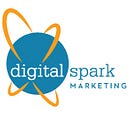An Integrated Marketing Strategy for Business Growth
The competitor to be feared is one who never bothers about you at all but goes on making his own business better all the time.
- Henry Ford
Yes, there are many businesses out there continuously making their business better and better all the while. And their goal is simple … using an integrated marketing strategy as the essence of the means that will generate business growth. Of course, if you have been in business for a while, you know this.
Related: Do You Know the 9 Keys to Create Effective Advertisements?
Have you noticed? It is hard not to notice, isn’t it? Let’s examine the key elements of such an integrated marketing strategy:
Tagline and brand
The heart of any business marketing strategy is their brand. The brand is built into and reflected by its tagline. Clearly, understand that your brand is not about you. Rather it is about how the potential client community sees you, feels about you and talks about you. Realize that the brand represents your current and future relationships with customers and prospective customers. Your goal is simple. Deliver emotional connections to your products and services. And put in the time necessary to do it very well.
Media commercials
You could not have helped but notice the commercials building and reinforcing any brand. Educating the public on important issues. Doing almost no selling. Not overdone with repeats because you have produced enough commercials on many topics. A high percentage of these commercials are done by one individual … the one most easily remembered. And the one with a very personal image.
See our article on constructing media commercials.
Website
The website is the physical center of a company’s marketing. Its design needs to be simple, yet containing the means to integrate all the strategy elements we discuss today. It should encompass several ways to allow two-way client engagement, including live chat, email (including direct to the key personnel), and telephone.
Again do very little to no selling. The strategy reflects the belief that pushy sales pitches turn customers off, but personally relevant and interactive engagement switches them on. You can’t help but notice that all the material is put into the language of the client community.
Support public issues
Your company should keep several public concerns front and center in their strategy at any one time. The senior leadership takes their messages on the issues to potential clients via community speaking engagements as well as all the marketing channels at their disposal. All of the issues on their agenda should represent those that the public majority supports.
Content marketing
The company should put content marketing to very effective use. You should typically have 8–10 blogs on various topics per month to help educate potential clients and help drive potential prospects to your website. The blogs are archived by categories, by month and year, and by subject tags. With good search engine optimization on each blog, the blogs do an excellent job of driving new potential clients to the website.
Be good at change
Very progressive companies keep up to speed on client trends, problem areas, and what your best competitors are doing. Certainly always eager to adapt their practices and expertise to new areas. And certainly always looking to try new things throughout their business, to include marketing.
Social media
We recommend starting with 2–3 social media channels/platforms to engage potential clients. (Facebook. Twitter, Google+ and YouTube are the top for starters). All channels are used to engage and share all their material in a conversational manner. Always looking to engage. Add 1 new channel each month or so to a maximum of 6–8. Stay with it as social media engagement takes time and consistency.
Short and sweet messages
80–90% of the marketing messages need to be on the order of 15 seconds. Very simple and to the point or objective. As we said previously, many topics are used to produce many messages so as not to over saturate the market with the same messages. Again, avoid sales messages.
Integrating the elements
All 10 of these strategy elements need to complement the firm’s brand and messages. The integrating elements? The brand and the client educational elements. The key is to have a central theme to the brand. This is the most important part of the strategy.
The bottom line
Here’s the thing, social isn’t just a new way of marketing, it’s really a new way of running a business. You need to rapidly figure this out and use social marketing to rapidly grow the business.
For a different way of marketing see our article on Marriott Marketing.
Mike Schoultz is a digital marketing and customer service expert. With 48 years of business experience, he consults on and writes about topics to help improve the performance of small business. Find him on G+, Facebook, Twitter, Digital Spark Marketing, and LinkedIn.
